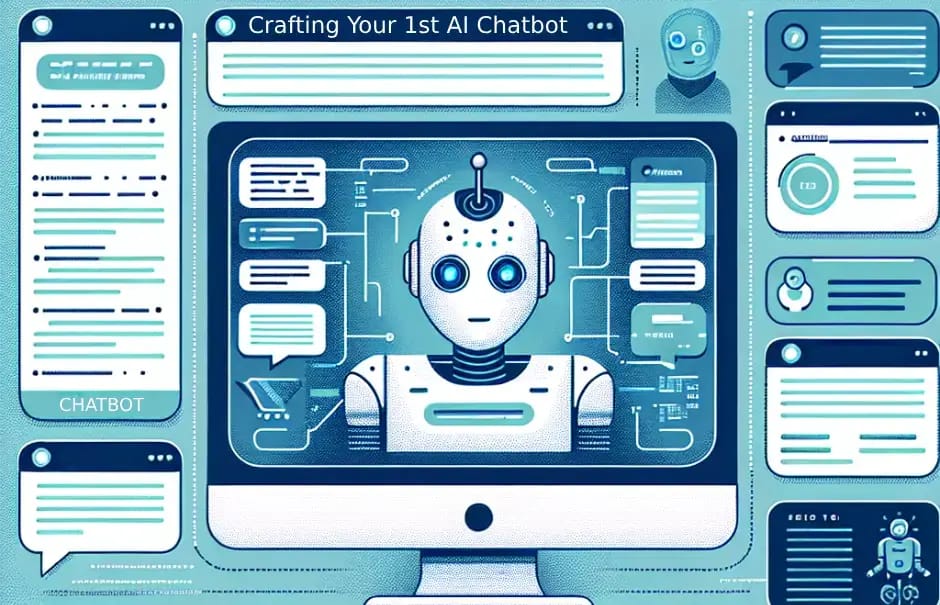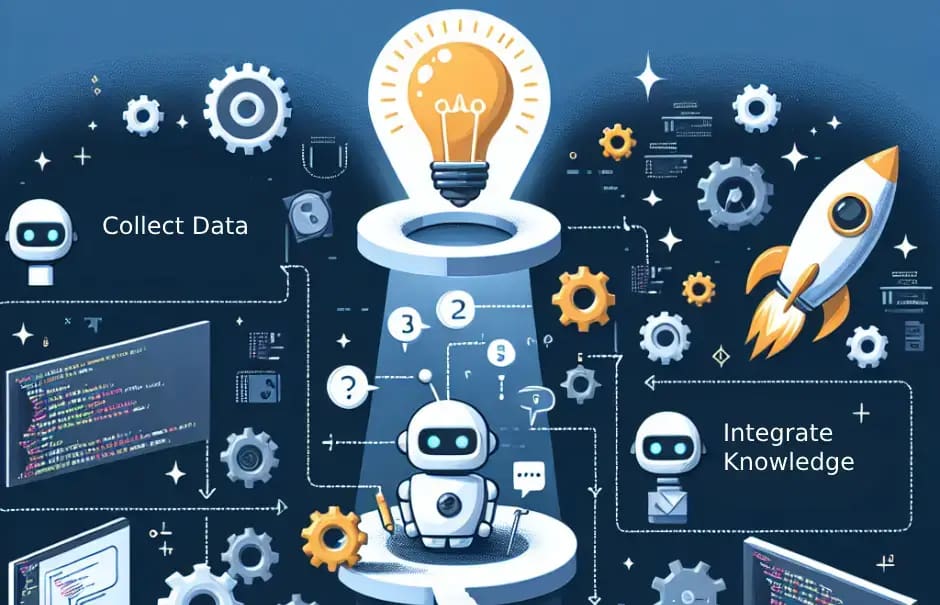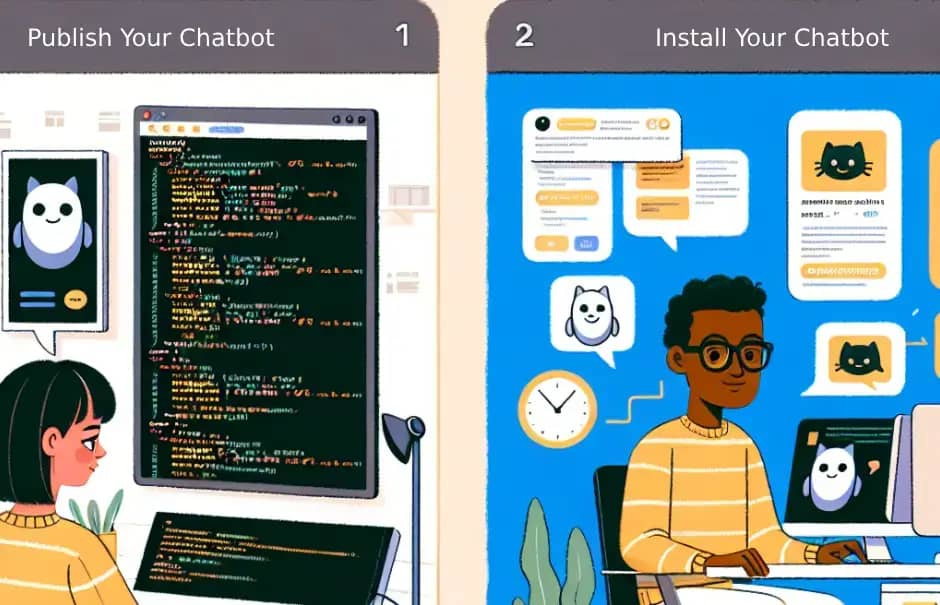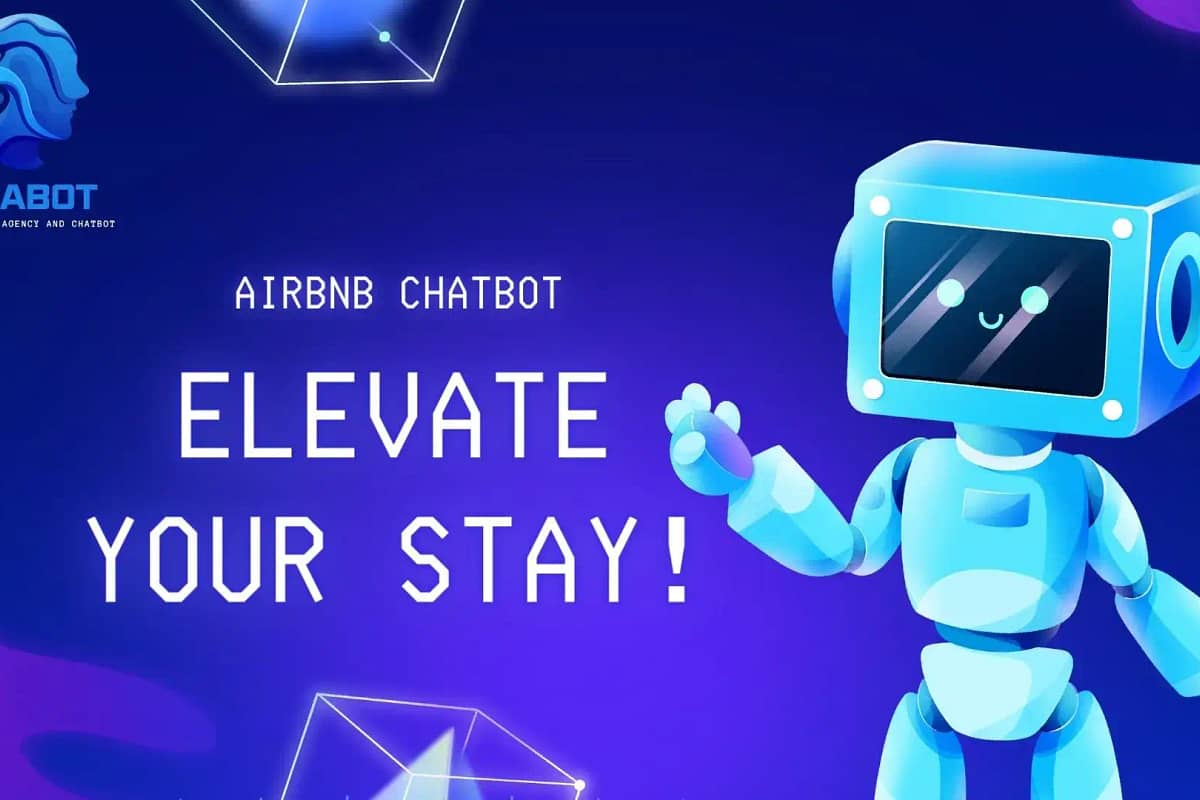Ever wondered how businesses keep up with countless customer queries through chatbot replies and tutorial assistance for customers?
It’s all about smart solutions like chatbots. Creating a chatbot, which utilizes speech recognition to understand human speech and respond to customers’ messages, might sound complex, but it’s simpler than you think and can revolutionize your customer service.
This tutorial on how to create a chatbot, will walk you through the steps of building a chatbot from scratch, including speech recognition and a welcome screen, ensuring your business is always one step ahead.
Whether for handling FAQs, messages, or providing round-the-clock replies and support, mastering chatbot creation with speech recognition through a tutorial is within your reach.

Key Takeaways on How to Create a Chatbot
- Start by clearly defining the purpose of your AI chatbot, incorporating speech recognition, a welcome screen, tutorial, and messages, to ensure it meets your business or personal objectives.
- Leverage your website URL as a foundation to create a chatbot, utilizing existing content and structure as input data to inform its design, incorporating speech recognition and providing a tutorial.
- Follow essential setup steps carefully, including defining user intents, crafting responses, and integrating speech recognition for input data, to build a solid foundation for your chatbot as outlined in the tutorial; ensure the messages are clear and concise.
- Invest time in effective training strategies, using real user queries as input data when possible, to enhance the chatbot’s understanding and responsiveness to human speech and messages through tutorial guidance.
- Regularly perform performance tuning, adjusting to feedback and analytics, to continuously improve the chatbot experience.
- Before going live, thoroughly test your AI chatbot in various scenarios, including tutorial and speech interactions, to ensure reliability and effectiveness for end-users and create a more human experience.
Crafting Your First AI Chatbot

How to Create a Chatbot with Function Goals
To start, define your chatbot’s main function. It could be a chatbot answering FAQs, booking appointments, providing customer support through speech, or offering a human-like tutorial. This step ensures your bot serves its purpose effectively.
Next, think about what you want from your chatbot. It should help users and save time. Make sure it does these things well.
How to Create a Chatbot: Platform Choice
Selecting the right platform is key. If you’re new to this, choose a chatbot tutorial that doesn’t require coding, like one focused on Python or speech. Many platforms offer drag-and-drop features making it easier to create your chatbot from scratch with Python, incorporating speech and human-like interactions.
For those with coding skills, platforms that allow customization through APIs might be better. They let you add unique features to your bot.
Learning Basics on How to Create a Chatbot
Understanding AI and machine learning is crucial. These technologies help chatbots understand human speech better over time. Read up on how AI works in bots.
Familiarize yourself with terms like “machine learning”, “natural language processing”, “chatbot”, “speech”, “python”, and “human”. This knowledge will help you make a smarter bot.
Utilizing Website URL for Bot Creation
URL Scanning
After crafting your first AI chatbot with Python, the next step is to feed it with human knowledge and speech. One efficient way to do this is by using the website URL scanning feature through a chatbot, incorporating speech recognition, developed in Python, to mimic human interaction. This chatbot tool automatically finds and uses information from your site to answer questions with human-like speech, powered by Python.
You input your website’s link into the chatbot builder. It then scans pages to gather FAQs and key info for the chatbot, using Python to interpret human speech. This makes your bot smart, quickly.
How to Create a Chatbot: Key Sections
Identifying which parts of your website are most useful is crucial. Look for sections like FAQs, product descriptions, and support pages. These areas have rich info about chatbot, Python, speech, and human interaction that can teach your bot a lot.
Focus on these sections, including speech and human interaction, when you set up your Python chatbot. They help it learn how to answer common questions. This makes your bot more helpful to users.
How to Create a Chatbot: Content Optimization
For a chatbot to understand your site well, optimize your content. Ensure it’s clear and relevant. Use simple language and structure information logically.
This helps the chatbot pick up essential details easier. It can then provide accurate answers to user queries. Optimizing content also improves user experience on your website.

Essential Setup Steps for Your Chatbot
Collect Data
Gather important details first. You need your company’s name, address, and social media links. This information helps your chatbot seem more personal.
Put these details into the chatbot’s settings. It makes sure your python chatbot can share them in speech when asked.
Decide Skills
Think about what you want your chatbot to do. It could, through speech, answer common questions or give out contact info as a chatbot.
Choose a few basic skills to start with. You can always add more later.
Integrate Knowledge
Add extra sources of information to your chatbot. This could be articles or help center links.
This step makes your chatbot smarter. It can give better answers because it knows more.
Effective Training Strategies
How to Create a Chatbot: Editable Texts
Train your chatbot with editable text articles, speech, and knowledge bases. This way, the chatbot learns to respond accurately to a wide range of speech and questions.
Using editable texts is a good idea. It makes training easier. You can add or change information any time. This keeps the chatbot smart and helpful.
How to Create a Chatbot: Regular Updates
Keep the chatbot’s knowledge base current. Update it regularly. This ensures the information stays relevant over time.
Updating the knowledge base is crucial. It prevents the chatbot from sharing outdated facts. Regular updates also improve conversion rates as users find up-to-date and relevant answers to their queries.
How to Create a Chatbot: Disable Pages
Disable specific category pages during training. Some pages may not be useful or could confuse the chatbot or speech bot.
Disabling irrelevant pages helps focus the chatbot’s learning on important topics. It avoids wasting time on unrelated tasks. This step makes the training process more efficient.
Performance Tuning Techniques
How to Create a Chatbot: Interaction Monitoring
Monitoring chatbot interactions is key. It helps us see where the chatbot struggles. We can then make the chatbot better by refining its speech responses.
It’s like keeping an eye on a student during class. We notice when they’re confused and help them understand better.
How to Create a Chatbot: User Feedback
User feedback is gold. It tells us what users like and don’t like about our chatbot. With this info, we adjust the chatbot’s settings to make people happier.
Think of it as asking friends how to improve a recipe. Their suggestions make the dish tastier.
How to Create a Chatbot: A/B Testing
A/B testing lets us try out different chatbot setups. We see which one users prefer and go with that option.
It’s similar to trying on two outfits and asking which looks better. The favorite choice wins.

Testing Your AI Chatbot
How to Create a Chatbot: Test Tools
Once you’ve tuned your chatbot’s performance, it’s time to test it. The Testing tool in the ChatBot web app is perfect for this. It lets you simulate real user interactions without any hassle.
You can see how your chatbot handles conversations. Make sure it navigates the conversation tree well. It should also use AI Knowledge to give accurate answers through chatbot.
How to Create a Chatbot: Debug Mode
Debug mode is a key feature during testing. It shows what happens behind the scenes when your chatbot processes questions.
This mode helps spot issues in text conversion or speech recognition. You can see exactly where improvements are needed.
How to Create a Chatbot: Typing Indicator
Don’t forget about the user experience. The Typing indicator makes chats feel more natural.
It shows users that the chatbot is “thinking” before giving an answer. This small detail can greatly improve how users feel about your chatbot.
How to Create a Chatbot: Real Scenarios
Test with real scenarios and diverse questions. Use examples that cover different tasks your chatbot might face.
Try audio signals and text to see how well your chatbot converts and responds. This ensures your chatbot works well in various situations.
Designing and Configuring Chat Widgets

Widget Appearance
Customizing your chat widget is crucial. It should look like it belongs on your site. You can change its theme color, avatar, and background. This makes the chat feel more personal.
Your brand shines through with these tweaks. Pick colors that match your logo or website theme. Adding an avatar, such as a chatbot, can be a photo of a mascot or a friendly face. This helps users feel they’re talking to someone real.
Welcome Screen
The welcome screen is what users first see. Make sure it’s inviting. Configure the welcome message and bot description here. Tell them what the chatbot can do for them.
Keep it short and sweet. Users should know exactly how the chatbot will help after reading this screen.
Real-Time Preview
Before you go live, preview your changes. This lets you see what users will see. It’s important because you want everything to look right.
You can adjust things if they don’t look good in the right corner or text field isn’t clear enough. Testing ensures everything works as expected, just like when you tested your AI chatbot before.
Engaging Users with Custom Greetings
Welcome Screen
After setting up your chat widget and chatbot, creating a welcoming atmosphere is crucial. A welcome screen does just that. It’s the first thing users see.
This screen should have a message that says hello in a way that feels warm and inviting. Think of it as the digital equivalent of a friendly nod or handshake when you meet someone new.
Message Timing
Timing is everything. You want your chatbot welcome message to pop up at just the right moment.
If the chatbot shows up too soon, visitors might feel overwhelmed. Too late, and they might think no chatbot’s there to help. Find a balance so the chatbot greeting appears when a visitor is likely ready to engage.
Brand Voice
Your greeting should sound like your brand. If your brand is playful, make the message fun. If it’s more serious, keep it professional but friendly.
This helps set the tone for the entire interaction and makes customers feel they’re in the right place with a chatbot.
Personalization
Adding personal touches can make a big difference. Use message metadata in your chatbot to customize greetings based on what you know about the visitor.
For example, if they’re returning customers, acknowledge that in your message. It shows recognition and appreciation for their loyalty.
Publishing and Installing Your Chatbot

Platform Guidelines
Follow the platform’s guidelines closely. Each platform has its own set of rules for chatbot integration.
After crafting custom greetings, it’s time to bring your chatbot to the audience. Start by choosing a platform that matches your needs. Once selected, dive into their specific guidelines. These instructions are crucial for a smooth launch. They tell you how to properly add your chatbot to a website or other channels. Always hit the save button after making changes. This ensures your hard work doesn’t get lost.
Live Testing
Test your chatbot in real conditions.
Before going public, test your chatbot thoroughly. This step is vital to catch any issues early on. Use various commands on the chatbot and see how it responds in different scenarios. Make sure the chatbot behaves as expected, especially after adding those engaging custom greetings from the previous section.
Feedback Loop
Gather user feedback for improvements.
Once live, watch how users interact with your chatbot. Their experiences can teach you a lot. Collect feedback regularly through chatbot and listen to what they have to say. This information is gold for making your chatbot better over time.
Summary
Crafting your first AI chatbot might seem like a tall order, but you’ve got this. From the initial setup to training strategies and finally publishing your bot, each step is crucial for creating a friendly, efficient chatbot.
Remember, it’s all about enhancing user experience. Your chatbot should feel like a helpful buddy, not a robot. Keep tweaking performance and testing regularly to ensure it stays top-notch.
Now, take what you’ve learned and dive in. Whether it’s designing engaging chatbot widgets or configuring custom greetings, every bit counts towards an unforgettable user experience. And hey, if you ever hit a snag, revisit these tips.
Ready to revolutionize how you connect with your audience? Launch your chatbot today and watch engagement soar. Let’s make digital conversations smoother and smarter together.
Frequently Asked Questions on How to Create a Chatbot
How do I start creating an AI chatbot?
Begin by defining your chatbot’s purpose and audience. Then, use a website URL for chatbot creation, focusing on essential setup steps to ensure a solid foundation.
What are the key steps in setting up my chatbot?
Focus on defining its purpose, designing conversation flows, and configuring settings for the chatbot. Essential setup includes choosing the right platform and integrating a chatbot with your website or app.
How can I train my chatbot effectively?
Employ effective training strategies by using varied customer interaction scenarios, including chatbot. Regularly update your chatbot with new information and feedback to improve accuracy.
What techniques can improve my chatbot’s performance?
Utilize performance tuning techniques such as optimizing response times, refining conversation paths, and enhancing understanding of user queries for better chatbot engagement.
How should I test my AI chatbot?
Conduct thorough testing of the chatbot by simulating real-user interactions, checking for conversational accuracy, response relevance, and user satisfaction across different scenarios.
Can I customize how my chatbot greets users?
Yes, engage users with custom greetings tailored to their behavior or the time of day to create a more personalized experience using a chatbot.
What’s involved in publishing and installing my chatbot?
After finalizing your chatbot, publish it on your platform of choice and install it on your website or app following the provider’s instructions for immediate user interaction.





